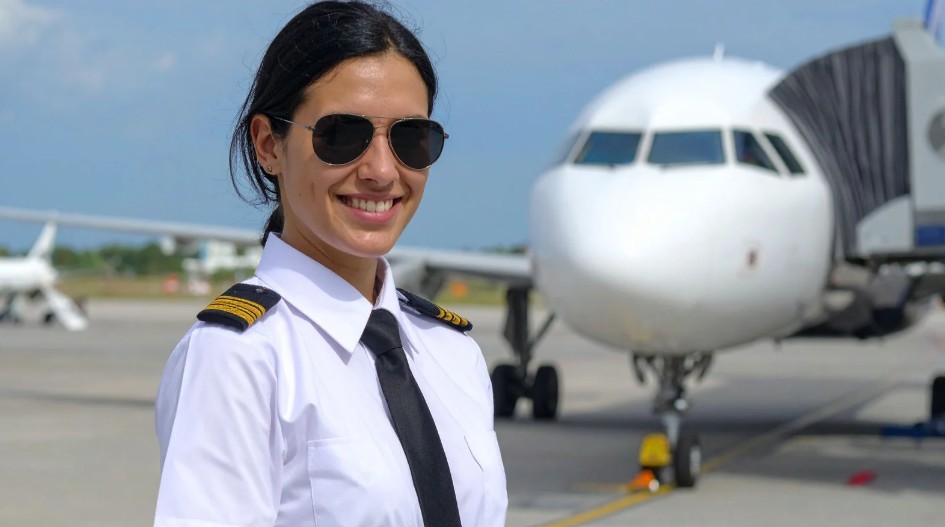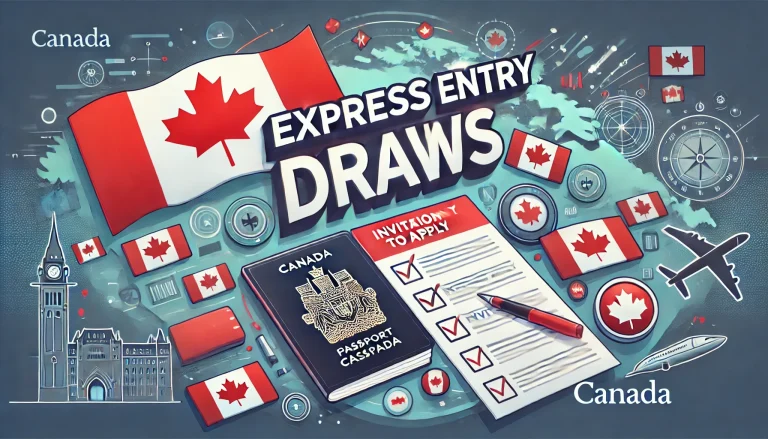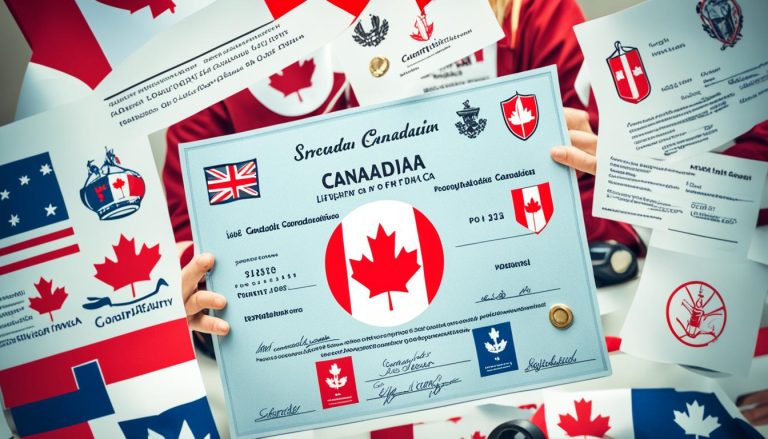Have you ever dreamed of flying across the Canadian Rockies, navigating the skies in a cockpit, or landing jets at major airports across the country? If so, you’re not alone. Many Canadians aspire to become pilots, driven by the thrill of aviation and the freedom it offers. But transforming this dream into reality involves a structured journey of education, training, exams, certifications, and determination.
In Canada, becoming a licensed pilot involves following strict regulations set by Transport Canada. From obtaining a Student Pilot Permit at the age of 14 to eventually earning an Airline Transport Pilot Licence (ATPL), the journey requires commitment and passion.
Whether you aim to fly recreationally or professionally for commercial airlines, this guide will walk you through every step, requirement, and qualification needed to become a successful pilot in Canada. Let’s break down the path and explore what it really takes to earn your wings.
What Are the Minimum Age and Education Requirements to Start Pilot Training in Canada?

Starting your journey to become a pilot in Canada begins with meeting some basic eligibility requirements. These set the foundation for your future training and licensing process.
The minimum age to begin flight training and obtain your Student Pilot Permit is 14 years. At this stage, you’re allowed to fly solo under an instructor’s supervision.
However, to earn your Private Pilot Licence (PPL), you must be at least 17 years old, and for a Commercial Pilot Licence (CPL), you must be 18 years old.
In terms of education, while there is no strict requirement for specific subjects, completing secondary school is mandatory. A high school diploma is the minimum educational threshold, and some airlines and advanced programs may require or prefer a college diploma or university degree.
Helpful courses to take in high school include:
- Math (especially physics-related)
- Science (physics and general science)
- Geography and navigation
- English or French (language proficiency is essential)
- Computer studies and problem-solving courses
Having a strong foundation in these subjects helps you better understand flight theory, meteorology, and aviation regulations during ground school. While post-secondary education isn’t mandatory for licensing, it enhances job prospects and is sometimes a hiring requirement for airlines. This combination of age and education gives you a solid starting point for your aviation journey in Canada.
What Is a Student Pilot Permit and How Do You Get It?
The Student Pilot Permit (SPP) is your first official step into aviation. It legally allows you to fly solo in Canada for training purposes under the guidance of a certified instructor. To obtain it, you must meet specific criteria set by Transport Canada.
Here’s how you get a Student Pilot Permit:
- Be at least 14 years of age
- Speak, read, and write English or French fluently
- Pass a Category 3 or 1 medical exam conducted by a Civil Aviation Medical Examiner
- Successfully complete a written exam on aviation regulations, aircraft operations, and navigation basics
Once you receive your permit, you can begin actual flight training, including supervised take-offs and landings. After enough progress, you’ll be cleared to fly solo, a major milestone in your pilot training.
What’s included in your early training:
- Ground School: Basic aerodynamics, regulations, radio procedures, and meteorology
- Flight Lessons: Dual instruction with a flight instructor in control of the aircraft
- Solo Flights: Once you’re ready, you’ll fly solo under your instructor’s supervision
Although the Student Pilot Permit is not a licence, it’s essential to progressing toward the Private Pilot Licence (PPL). It represents your commitment to flight and readiness to take on the skies responsibly.
What Kind of Medical Certificate Do You Need to Become a Pilot?
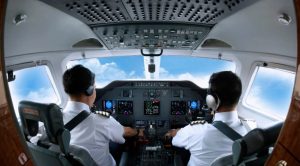
To ensure the safety of everyone in the air and on the ground, pilots must meet specific medical standards. Transport Canada mandates different classes of medical certification based on the type of licence you pursue.
You must obtain a medical certificate from a Transport Canada-approved Civil Aviation Medical Examiner (CAME). The type of certificate depends on the level of flying you aim to do.
Explanation of Category 1 and Category 3 Medical Certificates
- Category 1 Medical Certificate: Required for Commercial Pilot Licence (CPL) and Airline Transport Pilot Licence (ATPL). It includes a comprehensive physical exam, vision and hearing checks, cardiovascular assessment, urine analysis, and sometimes an ECG depending on age. It is valid for 1 year if you’re under 40, and 6 months if you’re over 40.
- Category 3 Medical Certificate: Required for Private Pilot Licence (PPL). It is less extensive than Category 1 and is valid for up to 5 years if under 40, or 2 years if over 40.
Conditions That May Disqualify You
Certain health conditions can disqualify you from passing the medical exam.
These include:
- Serious heart conditions or arrhythmias
- Uncontrolled epilepsy
- Poor vision or hearing impairments
- Neurological or psychiatric disorders
- Medications causing drowsiness or impaired judgment
These issues must be managed or treated to qualify. In some cases, applicants may undergo additional testing or review to gain medical clearance.
Medical Renewal Requirements
Medical certificates must be renewed periodically to maintain your licence status.
| Licence Type | Medical Category | Under 40 | Over 40 |
| PPL | Category 3 | 60 months | 24 months |
| CPL/ATPL | Category 1 | 12 months | 6 months |
It’s essential to book renewal appointments ahead of expiry to avoid licence suspension. Telemedicine may be permitted in some cases for renewals, especially in remote areas. Medical fitness is just as important as technical skill in aviation. Taking care of your health is an ongoing part of your flying career.
How Do You Earn a Private Pilot Licence (PPL) in Canada?
Earning your Private Pilot Licence (PPL) is the gateway to flying recreationally or continuing to a commercial career. This licence allows you to fly an aircraft alone or with passengers, though not for compensation.
To qualify for a PPL, you must:
- Be at least 17 years old
- Hold a valid Category 3 medical certificate
- Complete 40 hours of ground school, covering air law, navigation, flight theory, and meteorology
- Accumulate 45 hours of flight training, including a minimum of 17 hours dual instruction and a minimum of 12 hours solo flying, with at least 5 hours of cross-country flight
You must also:
- Pass the Transport Canada written exam with at least 60 percent in each subject and overall
- Successfully complete a flight test conducted by a certified examiner
While the PPL does not permit you to earn money as a pilot, it gives you the skills and experience needed to fly confidently and is a stepping stone to commercial licensing. Some students choose to stop at this level for recreational flying, while others continue toward professional aviation careers.
How Do You Get a Commercial Pilot Licence (CPL)?

After obtaining your PPL, the next step to becoming a professional pilot is earning your Commercial Pilot Licence (CPL). This licence allows you to be compensated for flying and opens the door to a wide range of aviation careers.
To obtain a CPL in Canada, you must:
- Be at least 18 years old
- Hold a valid Category 1 medical certificate
- Complete 80 hours of advanced ground school training in subjects such as advanced navigation, air law, and meteorology
- You must accumulate at least 200 hours of total flight time, including 100 hours as pilot-in-command (PIC), 20 hours cross-country, 35 hours of dual instruction, and 30 hours of solo flight time, with a long-distance solo cross-country included.
You must also:
- Pass the CPL written exam with a minimum score of 60 percent in each subject
- Complete a flight test with a qualified examiner
The CPL provides the legal authority to work as a pilot in Canada. It’s often the starting point for jobs such as flight instructor, bush pilot, or charter pilot. It also lays the foundation for progressing to an Airline Transport Pilot Licence (ATPL).
What Ratings and Endorsements Can You Add to Your Pilot Licence?
Once you’ve obtained your core licences, such as the PPL or CPL, adding ratings and endorsements expands your flying privileges. These qualifications allow you to fly in different conditions, aircraft types, and environments, which are essential for career development and job eligibility.
Common pilot ratings in Canada include:
- Night Rating: This endorsement allows you to fly during nighttime hours. It requires additional flight training that includes at least 5 hours of night flying, of which 2 hours must be cross-country and 10 solo night take-offs and landings. This rating is often a prerequisite for CPL and ATPL.
- Instrument Rating (Group 1): This rating enables you to fly an aircraft relying solely on instruments, useful when visual cues are limited or the weather is poor. You’ll undergo ground school, simulator training, and a minimum of 40 hours of instrument time.
- Multi-Engine Rating: With this rating, you’re qualified to fly aircraft with more than one engine. It includes both ground and in-aircraft training, focusing on engine-out procedures, asymmetrical thrust handling, and system failures.
Why Are These Essential for Your Career?
Adding ratings significantly increases your versatility as a pilot.
They make you eligible for:
- Commercial charters operating in low-visibility conditions
- Airline roles requiring night or long-haul flights
- Higher-paying jobs involving multi-engine aircraft
Most professional pilots pursue all three to become competitive candidates in Canada’s aviation job market.
How Do You Qualify for an Airline Transport Pilot Licence (ATPL)?
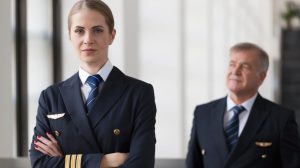
The Airline Transport Pilot Licence (ATPL) is the highest level of pilot certification in Canada. It allows you to act as the pilot-in-command (captain) of multi-crew aircraft, especially for airlines and long-haul carriers. To qualify, you must meet specific requirements regarding age, medical certification, flight hours, education, and testing.
Minimum Age and Flight Hours
| Requirement | Details |
|---|---|
| Minimum Age | 21 years old |
| Total Flight Time | Minimum 1500 hours |
| Pilot-in-Command (PIC) Time | 250 hours |
| Night Flying | 100 hours |
| Cross-Country as PIC | 100 hours |
| Instrument Time | 75 hours |
| Multi-Crew Experience | Required in multi-crew aircraft operations |
Written Exams and Multi-Crew Experience
Applicants must pass:
- Two written exams of the ATPL-Aeroplane (SARON) and ATPL-Operations (SAMRA) exams
- Each test requires a minimum score of 70 percent
- Complete an approved Multi-Crew Cooperation (MCC) course, which is often integrated into airline training programs
Ground School and Qualifications Checklist
While a college or university diploma is not mandatory, it is highly recommended for airline hiring.
Many airlines now prefer candidates with:
- Aviation-related degrees
- Multi-engine IFR experience
- Advanced simulator hours
Completing your ATPL makes you eligible to apply for positions with major carriers and is considered the ultimate step in becoming a full-fledged commercial airline pilot.
What Skills and Attributes Do Successful Pilots Need?
Flying an aircraft isn’t just about handling the controls, it demands a unique combination of technical skill and personal traits. As a pilot, you’ll need to consistently apply logic, communication, and judgment in high-pressure environments.
Key skills for Canadian pilots include:
- Analytical Thinking: Strong math, physics, and problem-solving skills are vital when making in-flight calculations or managing unexpected situations.
- Attention to Detail: Pilots must follow checklists precisely, monitor multiple instruments, and make small corrections to maintain safety and flight efficiency.
- Communication and Teamwork: Clear communication with co-pilots, cabin crew, and air traffic control is crucial. Being a good team player ensures smooth operations and passenger safety.
- Composure Under Pressure: Situational awareness and calm decision-making are necessary during turbulence, technical failures, or emergency landings.
- Adaptability and Quick Learning: Weather conditions, aircraft types, and airspace protocols vary frequently. Being adaptable helps you remain effective in changing conditions.
Building these core attributes alongside your certifications helps you thrive in Canada’s professional aviation landscape.
What Are the Common Career Paths for Licensed Pilots in Canada?

Once you’re licensed, a wide range of aviation career opportunities open up across Canada. From regional carriers to international airlines, the choices vary depending on your licence type, experience, and personal goals.
Charter Companies, Bush Flying, and Flight Instruction
- Charter Pilots fly for private companies, often transporting executives, cargo, or medical patients.
- Bush Pilots operate in remote northern regions, using floatplanes or STOL aircraft to land on water or rugged terrain.
- Flight Instructors help train student pilots. Many pilots start their careers as instructors to accumulate hours.
Cargo Transport, Medevac, Firefighting
- Cargo Pilots work for logistics companies, transporting goods nationally and internationally.
- Air Ambulance/Medevac Pilots are trained for emergency medical evacuations.
- Firefighting Pilots assist in aerial water drops over forest fires, often using specialized aircraft.
Joining a National Airline and Advancement Opportunities
Many Canadian pilots aspire to join:
- Regional airlines
- National carriers
- International airlines
Airline pilots often start as:
- Second Officers or Relief Pilots
- Then move up to First Officers
- Eventually become Captains, typically after 3–15 years
| Career Path | Entry Role | Avg. Salary |
| Flight Instructor | Instructor | $40,000–$60,000 |
| Charter Pilot | Co-pilot | $60,000–$90,000 |
| Airline Pilot | First Officer | $85,000–$150,000 |
| Airline Captain | Senior Role | $255,000–$397,000 |
The demand for experienced, flexible pilots is high, and career progression is possible with dedication and continuous training.
What Is the Work Environment Like for a Pilot in Canada?
The work environment for pilots is dynamic and often unpredictable. Weather changes, time zone shifts, and irregular schedules make it both exciting and challenging.
Pilots work from small cockpits and may spend several hours seated during flights. While modern aircraft are designed for comfort, the mental and physical focus required is intense.
Typical aspects of a pilot’s work environment include:
- Irregular Hours: Flights occur early mornings, late nights, weekends, and holidays
- Time Away from Home: Overnight stays and extended trips are common
- Team Coordination: Pilots work closely with co-pilots, cabin crew, and air traffic control
- Fatigue Management: Sleep and alertness are managed according to duty time regulations
- Responsibility: You’re accountable for passenger safety and aircraft performance
Despite the demands, most pilots enjoy the scenic views, travel perks, and job variety. For those passionate about aviation, it offers a truly rewarding career.
How Much Do Pilots Earn in Canada?

Pilot salaries in Canada vary widely based on experience, licence level, type of employer, and location. Entry-level roles pay modestly, but earnings grow substantially with hours and certifications.
Salary Ranges by Licence Type and Experience
- Private Pilots (non-commercial) typically fly recreationally and do not earn income from flying.
- Commercial Pilots (CPL holders) earn between $50,000 and $120,000 annually.
- Airline Pilots (ATPL holders) can earn from $150,000 to over $350,000 annually, depending on aircraft type and experience.
Regional Salary Differences
Below is a provincial breakdown of pilot salaries in Canada:
| Province or Territory | Avg. Salary |
| Alberta | $103,980 |
| British Columbia | $88,362 |
| Manitoba | $149,856 |
| New Brunswick | $188,008 |
| Ontario | $86,785 |
| Quebec | $112,706 |
| Nova Scotia | $85,792 |
| Saskatchewan | $72,130 |
| Yukon | $138,497 |
| Nunavut | $98,541 |
Example Pay Progression: First Officer to Captain
- First Officer (Airline): $85,000–$150,000
- Narrowbody Captain: $255,000–$291,000 (after 3–5 years)
- Widebody Captain: $315,000–$397,000 (after 11–15 years)
Salaries are also supplemented by travel benefits, insurance, pension plans, and bonuses, especially with national carriers.
What Are the Steps to Apply for Pilot Jobs with Major Airlines?
Once you hold the necessary licences and meet experience requirements, applying for pilot roles with airlines is your next step.
Steps to follow:
- Build 2000+ hours of flight experience, preferably in multi-engine and IFR settings
- Complete your ATPL with Group 1 Instrument Rating
- Ensure a valid Category 1 medical certificate
- Prepare a detailed resume, including simulator experience and education
- Submit your application via airline portals or recruitment agencies
- Prepare for technical interviews, simulator assessments, and personality evaluations
Many airlines also value aviation degrees, military or commercial flight experience, and teamwork skills. Maintain ongoing training to remain competitive.
Is There a Demand for Pilots in Canada?
Yes, there is a growing demand for qualified pilots in Canada, driven by retirements, increased air traffic, and limited training capacity during the pandemic.
Recent industry reports indicate that:
- The number of commercial licences issued has decreased by over 80 percent since 2019
- Airlines are expanding fleets and adding new routes
- Pilot shortages are particularly noticeable in regional and remote operations
Canada is also a hub for international aviation training, offering opportunities for foreign students to train and stay as instructors or CPL holders. If you’re serious about flying, this is one of the best times to enter the profession.
Conclusion
Becoming a pilot in Canada is a detailed and rewarding journey that combines passion, precision, and persistence. From earning your Student Pilot Permit at 14 to securing an ATPL and joining a major airline, each step is essential to achieving your goals.
The path requires time, investment, and continuous learning, but the rewards, both personal and professional, are immense. With high demand for skilled pilots, diverse career paths, and impressive earning potential, the aviation industry in Canada offers incredible opportunities for those ready to take flight.
FAQs
How long does it take to become a pilot in Canada?
It typically takes 18–24 months to become a commercial pilot if training is continuous and full-time.
Can international students train to become pilots in Canada?
Yes, many Canadian flight schools welcome international students and offer post-training work opportunities.
What subjects should I take in high school to prepare for pilot training?
Math, physics, English, and geography are recommended for building aviation-related skills.
Is it possible to become a pilot without going to university?
Yes, a degree is not mandatory, but it may improve job prospects, especially with major airlines.
What is the difference between a PPL and a CPL?
A PPL allows you to fly for personal use, while a CPL permits you to earn money as a professional pilot.
Do pilots need perfect eyesight?
Not necessarily, but your vision must be correctable to 20/20 through glasses or contacts.
Can I work as a pilot with only a CPL?
Yes, many entry-level jobs like flight instruction or charter flying require just a CPL.

